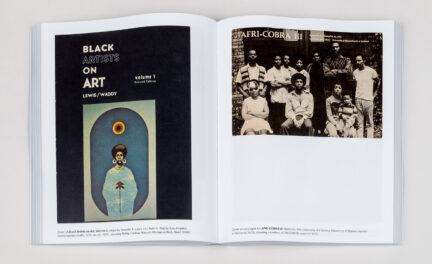
Muhammad Ali and Joe Frazier in the “Fight of the Year” at Madison Square Garden, New York, March 1971. Moneta Sleet, Jr., Johnson Publishing Company Archive
Against the backdrop of Jim Crow, Ebony and Jet magazines addressed African American cultural and political realities. From the lives of Hollywood celebrities to the ongoing fight for human and civil rights, Johnson Publishing Company publications documented key moments in African American life that changed how we think about ourselves as a nation.
A new website from the National Museum of African American History and Culture (NMAAHC) explores the impact of Ebony and Jet magazines through an array of commanding photographs from the Johnson Publishing Company archive selected by Getty curator LeRonn Brooks and NMAAHC curator Aaron Bryant.
Starting with its first issue in November 1945, the publication chronicled black life and contributions across regions and generations. In documenting the American experience, Ebony extended its value beyond its iconic place in American popular culture. As an archival resource, the magazine reimagined its meaning and value as a vital record of American history.

Poet Langston Hughes outside the Shanghai Café, ca. 1955. G. Marshall Wilson, Johnson Publishing Company Archive
Key to Ebony’s success was a roster of photojournalists who documented and communicated cultural symbols and values through images. They produced decades of visual commentary on Black life and achievement to redefine photojournalism and reflect how Black communities saw and imagined themselves.
Staff photographers such as Pulitzer Prize winner Moneta Sleet Jr., David Jackson, and Isaac Sutton, among others, played important roles in John H. Johnson’s vision of producing ennobled and representative imagery. They photographed prominent African American public figures such as Coretta Scott King, Nina Simone, Shirley Chisholm, and Leontyne Price.
Through a unique visual voice and cultural lens, these photographers also chronicled Black trials and tragedies, to look beyond the image’s surface and find its truth and humanity. In 1956, for example, Moneta Sleet, Jr. photographed a scarred and despondent Billie Holiday. As the photographer recalled, “During the photo session, she seemed as if she was just going through the motions. There was despair in her eyes.”

Billie Holiday photographed by Moneta Sleet, Jr. in 1956. Johnson Publishing Company Archive
“Ebony encompassed a visual legacy that reflected the bittersweet, melancholic, and joyful complexities within the African American experience. There is no more important archive of 20th-century African American life and culture,” said LeRonn Brooks, Associate Curator, Modern and Contemporary Collections, Getty Research Institute.

Congresswoman Shirley Chisholm had recently become the first African American female of Congress when this photograph was taken in 1969. The same year, she was also a founding member of the Congressional Black Caucus, 1969. Maurice Sorrell, Johnson Publishing Company Archive
The Johnson Publishing Company Archive was acquired in 2019 by a not-for-profit consortium that consists of the Smithsonian Institution, the J. Paul Getty Trust, the Ford Foundation, the Andrew W. Mellon Foundation, and the John D. And Catherine T. MacArthur Foundation. The collection includes 3.35 million negatives and slides, 983,000 photographic prints, 166,000 contact sheets, and 9,000 audio and visual recordings.
The consortium seeks to preserve, study, and digitize the Johnson Publishing Archive and to make it broadly accessible to the public.
This text is excerpted from the NMAAHC website Ebony75, where you can discover more from the archive.




Comments on this post are now closed.